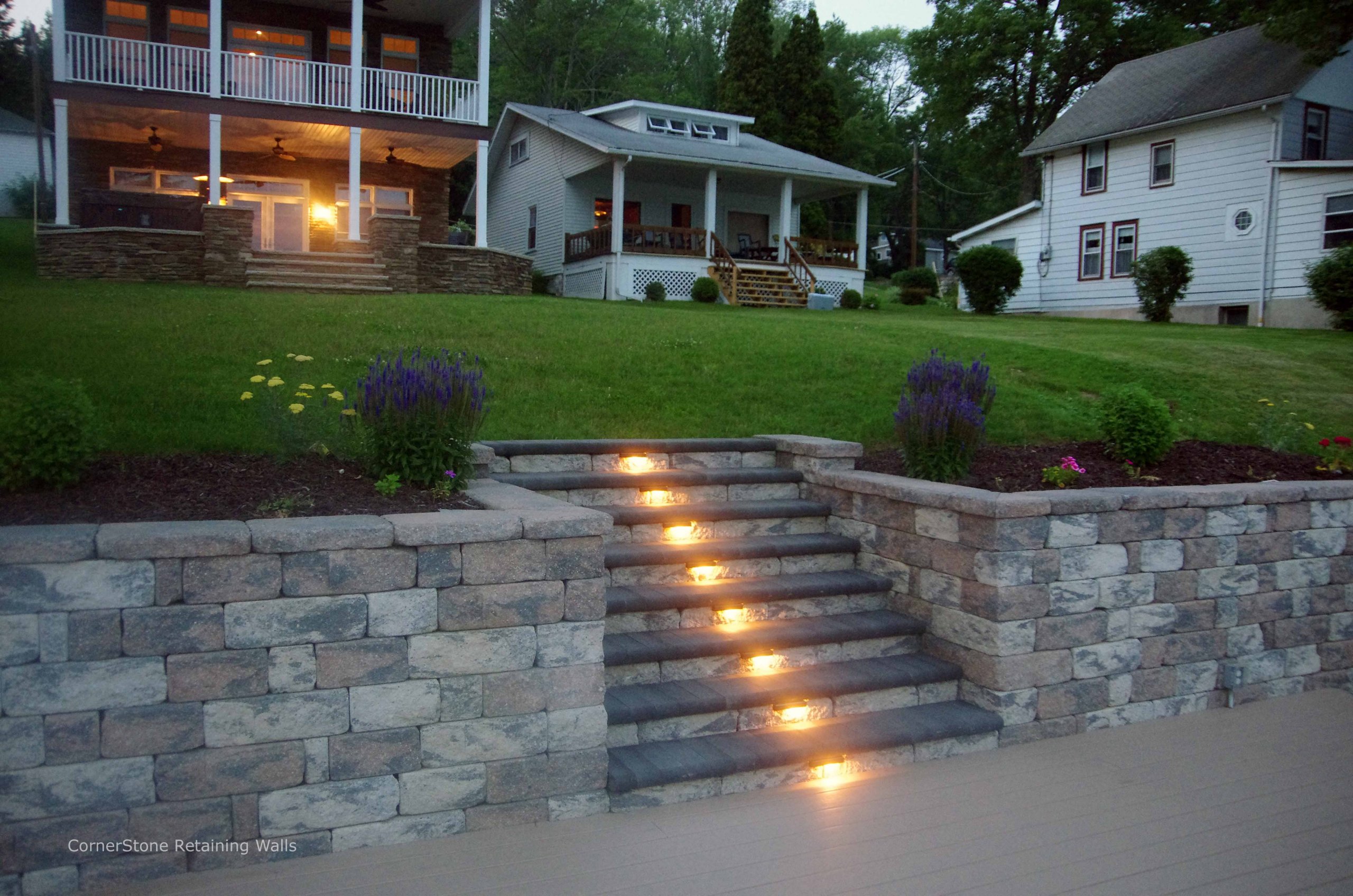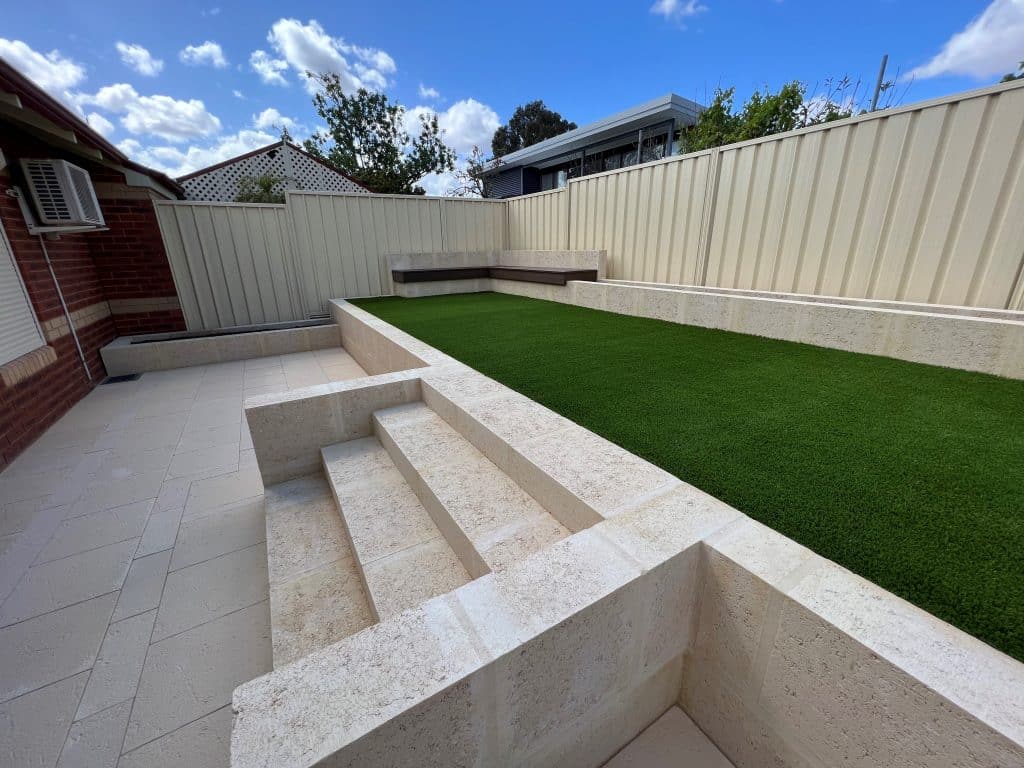Affordable and High-Quality Retaining Walls Sunshine Coast: What to Know
Affordable and High-Quality Retaining Walls Sunshine Coast: What to Know
Blog Article
Enhancing Residential Property Stability: The Role of Retaining Walls in Dirt Retention and Disintegration Control
In the world of residential or commercial property administration, preserving security and avoiding disintegration are vital worries for homeowner and programmers alike. Keeping wall surfaces stand as silent guardians, playing a crucial function in soil retention and erosion control. Their relevance extends past plain structural assistance, influencing the general stability and durability of a building. By checking out the nuances of different types, style factors to consider, building and construction strategies, and maintenance tips related to retaining wall surfaces, a deeper understanding of their crucial function in improving property stability arises. The intricate dance between engineering prowess and environmental consistency introduces an engaging story that highlights the important nature of preserving wall surfaces in modern-day land management.
Relevance of Retaining Walls in Security
Retaining walls play a critical function in holding back dirt, protecting against disintegration, and producing level surface areas in sloped locations. By providing architectural support, maintaining walls assist to rearrange side pressure caused by soil, stopping landslides and slippage.
Keeping wall surfaces are particularly important in uneven or hilly terrains where soil erosion is a common incident. Without ample assistance, dirt erosion can result in the deterioration of landscapes, jeopardizing the honesty of structures and posturing dangers to residents. Keeping walls function as obstacles, stabilizing the soil and preventing it from moving downhill during hefty rainfall or various other ecological stress factors.
Furthermore, preserving wall surfaces offer lasting advantages by lowering maintenance expenses connected with soil disintegration and land instability. By buying properly designed maintaining wall surfaces, building proprietors can ensure the durability and sustainability of their landscapes while advertising a secure and visually attractive atmosphere.

Kinds of Retaining Walls for Erosion Control
Generally made use of in landscaping and civil engineering jobs, different kinds of retaining walls work as efficient services for disintegration control in diverse terrain conditions. Gravity preserving wall surfaces are durable structures that depend on their weight to resist the stress of the soil behind them. They appropriate for low to medium elevation applications and are commonly made of concrete or stone. Cantilever preserving walls, on the various other hand, are created with a thicker base and use a lever arm to stand up to the soil stress. These walls are generally used in areas where space is restricted.
For taller wall surfaces or where area is a constraint, secured retaining walls are usually utilized. When choosing the ideal type of retaining wall for erosion control, aspects such as dirt structure, wall surface elevation, and website problems should be meticulously taken into consideration to make certain resilient stability and effectiveness.
Design Factors To Consider for Soil Retention
When considering design elements for efficient soil retention options,Integrating the principles of architectural design and environmental sustainability is important. When developing for dirt retention, it is crucial to analyze the specific requirements of the site, including dirt composition, water drain patterns, and slope stability. The height and place of the keeping wall surface are crucial elements that influence the general layout. Designers should additionally think about the stress exerted by the preserved dirt and prospective lateral tons to guarantee the structure's security gradually.
Furthermore, the material choice for the preserving wall is vital in enhancing longevity and performance. Concrete, hardwood, gabion baskets, and all-natural stone are usual materials utilized in keeping wall building, each with its one-of-a-kind benefits and considerations. Proper drainage mechanisms, such as weep openings and French drains pipes, should be incorporated right into the layout to stop water build-up behind the wall surface, which can result in architectural failing and erosion.
Building Strategies for Maintaining Wall Surfaces
When executing style factors to consider for reliable soil retention, the construction methods for retaining walls play a vital role in ensuring architectural stability and long-term stability. One typical technique is the gravity wall surface, which counts on the weight and mass of the wall itself to withstand the stress of the preserved soil.
Another widely used building and construction technique is the cantilevered wall, which uses a concrete piece foundation that extends in reverse into the preserved soil. This design supplies extra stability and is suitable for medium to high preserving walls. For taller structures, enhanced dirt methods such as making use of continue reading this geogrids or dirt nails can be employed to improve the wall's toughness and stability.

Upkeep Tips for Building Stability
To make certain long-lasting building stability, normal maintenance methods are crucial for protecting the honesty of preserving walls and avoiding erosion issues. Cleaning up the surface of the retaining walls can also help preserve their structural stability by getting rid of dust, particles, and greenery that might deteriorate the wall surface over time.
Along with aesthetic evaluations and cleansing, it is important to examine the drainage systems connected with the retaining wall surfaces. Making sure that drains are clear of obstructions and operating effectively can avoid water buildup behind the wall surfaces, which can result in pressure and prospective failure. Correctly working drainage systems are important for taking care of water flow and decreasing the danger of erosion.
Consistently keeping track of and maintaining preserving wall surfaces according to these pointers can extend their lifespan and add to the general security of the home.
Verdict
In final thought, keeping wall surfaces play an essential role in enhancing residential property security by preventing soil erosion and retaining soil in area. Regular maintenance of preserving walls is essential to make sure lasting security and defense against erosion.
For taller wall surfaces or where area is a constraint, anchored keeping wall surfaces are typically utilized. These walls make use of wires or strips that are anchored right into the soil or rock behind the wall to provide added assistance. When picking the ideal type of maintaining wall a knockout post surface for erosion control, variables such as dirt structure, wall surface elevation, and website problems should be very carefully considered to make sure resilient security and performance.
One common strategy is the gravity wall, which counts on the Click Here weight and mass of the wall itself to stand up to the pressure of the maintained dirt. Cleaning up the surface of the keeping walls can likewise aid maintain their structural stability by eliminating dirt, debris, and greenery that could damage the wall over time.
Report this page